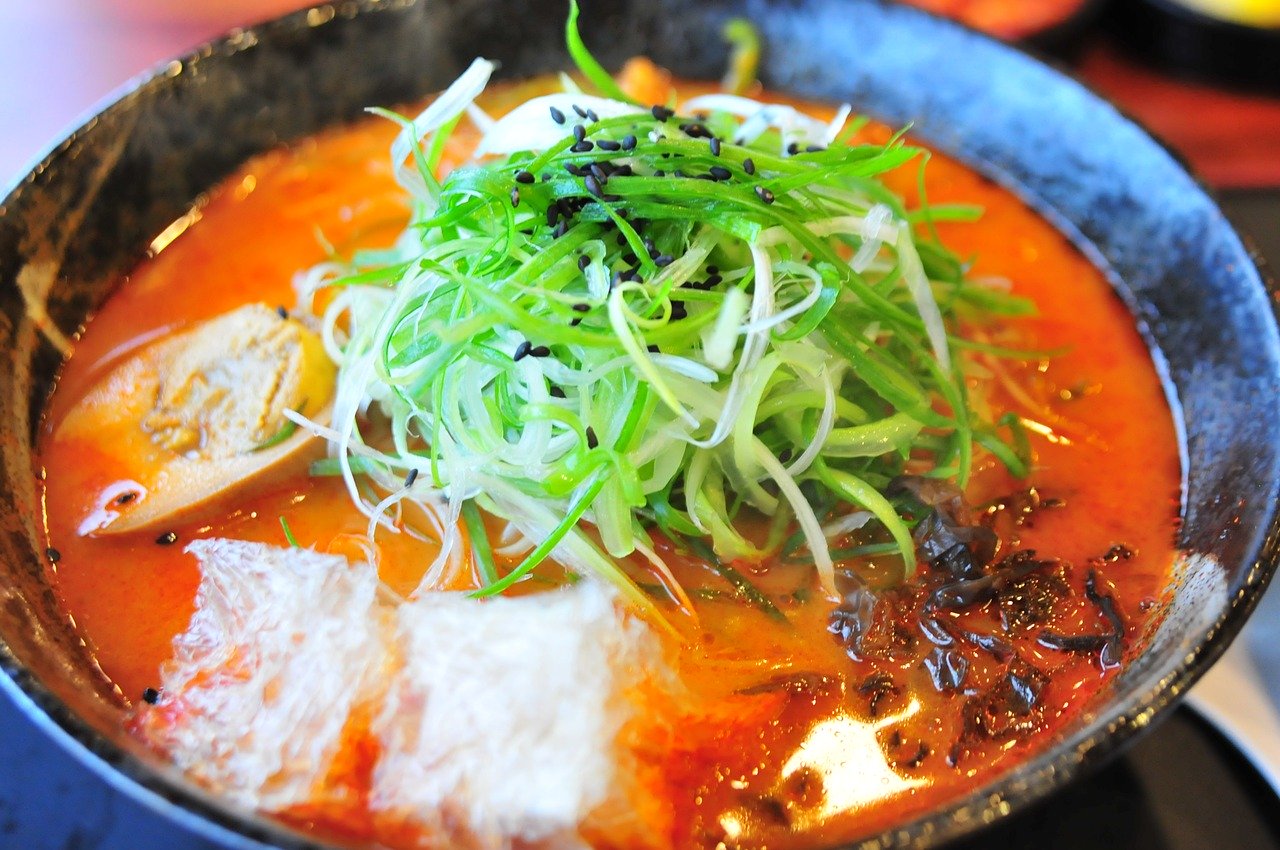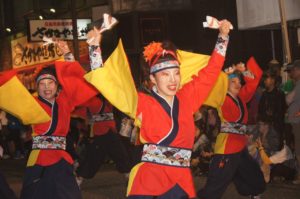If you’re learning Korean, 음식 eumshik food is one of the things you’ll probably need to – or at least want to – talk about. So in this post, let’s dig in to some vocabulary for food, cooking, and meals.
배고파요! baegopayo! I’m hungry!
Let’s start with things you might want to say before you have something to eat or drink.
- 배고파요!
baegopayo!
I’m hungry. - 배고파 죽겠어요!
baegopa juggesseoyo!
I’m starving! - 목 말라요.
mog mallayo.
I’m thirsty.
- 목 말라 죽겠어요.
mog malla juggesseoyo.
I’m dying of thirst! - 뭘 먹고 싶어요.
mwol meoggo shipeoyo.
I want something to eat. - 뭘 마시고 싶어요.
mwol mashigo shipeoyo.
I want something to drink. - 간식 먹고 싶어요.
ganshig meoggo shipeoyo.
I feel like a snack.
저녁 준비 되었어요. jeonyeog junbi doeeosseoyo. Dinner is ready!
The meals in Korean are 아침 식사 achim shigsa (breakfast), 점심 식사 jeomshim shigsa (lunch), and 저녁 식사 jeonyeog shigsa (dinner). A snack is 간식 ganshig.
- 아침 식사는 뭐예요?
achim shigsa-neun mwoyeyo?
What’s for breakfast? - 점심 식사는 뭐예요?
jeomshim shigsa-neun mwoyeyo?
What’s for lunch? - 저녁 식사는 뭐예요?
jeonyeog shigsa-neun mwoyeyo?
What’s for dinner? - 후식은 뭐예요?
hushig-eun mwoyeyo?
What’s for dessert? - 아침을 일찍 먹어요.
achim-eul iljjig meogeoyo.
I eat breakfast early. - 점심을 동료들과 먹어요.
jeomshim-eul donglyodeulgwa meogeoyo.
I eat lunch with colleagues. - 저녁을 가족들과 먹어요.
jeonyeog-eul gajogdeulgwa meogeoyo.
I eat dinner with my family.
식당에서 shikdangeseo At a restaurant.
If you go to a restaurant, these expressions may come in handy.
- 한명/두명/세명/네명/다섯명 자리로 부탁해요.
hanmyeong/dumyeong/semyeong/nemyeong/daseosmyeong jalilo butaghaeyo.
A table for one/two/three/four/five, please. - 예약 했어요?
yeyag haesseoyo?
Do you have a reservation? - (나는/우리는) 예약 했어요.
(na-neun/uli-neun) yeyag haesseoyo.
I have a reservation. We have a reservation. - (나는/우리는) 예약 하지 않았어요.
(na-neun/uli-neun) yeyag haji anhasseoyo.
I don’t have a reservation. We don’t have a reservation. - 메뉴판이 있어요?
menyupan-i isseoyo?
Do you have a menu? - 영어 메뉴판이 있어요?
yeongeo menyupan-i isseoyo?
Do you have a menu in English? - 와인리스트 가 있어요?
wainliseuteu-ga isseoyo?
Do you have a wine list? - 주문 하시겠습니까?
jumun hasigessseumnikka?
Are you ready to order? - (나는/우리는) 주문 할께요.
(na-neun/uli-neun) jumun halkkeyo.
I’m ready to order. We’re ready to order. - (나는/우리는) 주문할 준비가 안되었어요.
(naneun/ulineun) jumunhal junbiga andoeeosseoyo.
I’m not ready to order. We’re not ready to order. - 조금만 기다려 주세요.
jogeumman gidalyeo juseyo.
A few more minutes, please. - 추천해 주시겠어요?
chucheonhae jushigesseoyo?
What do you recommend? - 냅킨/포크/나이프/젓가락 주실래요?
naebkin/pokeu/naipeu/jeosgalag jusillaeyo?
Could I have a napkin/fork/knife/spoon/chopsticks? - 물한잔 주실래요?
mulhanjan jusillaeyo?
Could I have a glass of water? - 어디서 계산해요?
eodiseo gyesanhaeyo?
Where do I pay?
채식주의자예요. chaeshigjuuijayeyo. I’m vegetarian.
If you’re on any kind of restricted diet, you may need to know these helpful expressions before you order.
- 다이어트 중이에요.
daieoteu jung-ieyo.
I’m on a diet. - 채식주의자예요. 고기나 생선을 안먹어요.
chaeshigjuuijayeyo. gogina saengseon-eul an meogeoyo.
I’m vegetarian. I don’t eat meat or fish. - 비건이에요. 동물 제품은 먹지 않아요.
bigeon-ieyo. dongmul jepum-eun meogji anhayo.
I’m vegan. I don’t eat any animal products. - 글루텐은 안먹어요.
geulluten-eun an meogeoyo.
I don’t eat gluten. - 땅콩 알러지가 있어요.
ttangkong alleojiga isseoyo.
I’m allergic to peanuts. - 유제품 알러지가 있어요.
yujepum alleojiga isseoyo.
I’m allergic to dairy products. - 견과류 알러지가 있어요.
gyeongwalyu alleojiga isseoyo.
I’m allergic to tree nuts. - 조개 알러지가 있어요.
jogae alleojiga isseoyo.
I’m allergic to shellfish. - 술을 안마셔요.
sul-eul an masheoyo.
I don’t drink alcohol. - 카페인 들어간 차/커피를 안마셔요.
kapein deul-eogan cha/keopi-leul an masheoyo
I don’t drink tea or coffee with caffeine. - 이것은 코셔 음식이에요?
igeos-eun kosheo eumshig ieyo?
Is this food kosher? - 이것은 할랄 음식이에요?
igeos-eun hallal eumshig ieyo?
Is this food halal?
너무 맵지 않게요 neomu maebji angeyo! Not too spicy!
People can tolerate different levels of heat in their food, so you may want to say:
- 이것은 매워요?
igeos-eun maewoyo?
Is this spicy? - 매운 음식을 좋아해요.
maeun eumshig-eul johahaeyo.
I like spicy food. - 매운 음식을 안좋아해요.
maeun eumshig-eul an johahaeyo.
I don’t like spicy food. - 아주 맵게 부탁해요.
aju maebge butaghaeyo.
Very spicy, please. - 보통 맵게 부탁해요.
botong maebge butaghaeyo.
Medium spicy, please. - 맵지 않게 부탁해요.
maebji ange butaghaeyo
Not spicy, please. - 이것은 너무 매워요.
igeos-eun neomu maewoyo.
It’s too spicy.
음식이 어때요? eumshig-i eottaeyo? How’s your food?
The four basic tastes are 짜요jjayo (salty), 달아요dalayo (sweet), 써요sseoyo (bitter), 시어요 shieoyo (sour). But if someone asks how your food is, you’ll probably want know a bit more than that.
- 맛있어요.
mashisseoyo.
It’s delicious. - 이 음식은 훌륭해요.
eumshig-eun hullyunghaeyo.
This food is excellent. - 너무 뜨거워요.
neomu tteugeowoyo.
It’s too hot. - 너무 차요.
neomu chayo
It’s too cold. - 너무 달아요.
neomu dalayo.
It’s too sweet. - 너무 짜요.
neomu jjayo.
It’s too salty. - 싱거워요.
shinggeowoyo.
It’s tasteless/bland. - 너무 익었어요.
neomu inyeosseoyo.
It’s overcooked. - 덜 익었어요.
deol ingyeosseoyo.
It’s undercooked. - 기름져요.
gileumjyeoyo.
It’s oily/greasy.
요리하는 것을 좋아해요. yoliha-neun geoseul johahaeyo. I like to cook.
Sometimes, it’s nice to stay in and cook, especially if 요리를 잘 하네요 yoli-leul jal haneyo (you’re a good cook.) Here are some basic vocabulary and expressions for cooking.
- 저녁 준비 할께요.
jeonyeog junbi halkkeyo.
I’m going to cook dinner. - 이것은 쉬운/어려운 요리법이네요.
igeos-eun swiun/eolyeoun yolibeob-ineyo.
This is an easy/hard recipe. - 재료를 사야해요.
jaelyoleul sayahaeyo.
I need to buy the ingredients. - 물을 끓이고 있어요.
mul-eul kkeulh-igo isseoyo.
I’m boiling water. - 밥을 해요.
bab-eul haeyo.
I’m cooking rice. - 파스타를/감자를 요리해요.
paseuta-reul/gamja-reul yolihaeyo.
I’m cooking pasta/potatoes. - 야채를/닭고기를/생선을 튀겨요.
yachae-reul/dalggogi-reul/saengseon-eul twigyeoyo.
I’m frying vegetables/chicken/fish. - 빵을/쿠키를/케익을 구워요.
ppang-eul/kuki-reul/keig-eul guwoyo.
I’m baking bread/cookies/a cake. - 양고기를/닭고기를/소고기를 구워요.
yanggogi-reul/dalggogi-reul/sogogi-reul guwoyo.
I’m roasting lamb/chicken/beef. - 생선을/닭고기를/야채를 구워요.
saengseon-eul/dalggogi-reul/yachae-reul guwoyo.
I’m grilling fish/chicken/vegetables. - 재료를 섞어요.
jaelyo-reul seokkeoyo.
I’m mixing the ingredients. - 소스를 넣어 볶아요.
soseu-reul neoheo bokkayo.
I’m stirring the sauce. - 소금을/설탕을/물을/허브를/향신료를 넣어요.
sogeum-eul/seoltang-eul/mul-eul/heobeu-reul/hyangsinlyo-reul neoh-eoyo.
I’m adding salt/sugar/water/herbs/spices.
맛있게 먹어요! mashitge meogeoyo! Enjoy your meal!
Learn Korean with the Language Garage
Check out our other posts on Korean language, culture, and more. And if you’re looking for convenient and affordable live Korean lessons with a real teacher, check out The Language Garage. Our lessons are given online in a virtual classroom, so it doesn’t matter where you live or work – we can come to you. And we have flexible options, with a free trial so that you can decide if there’s a fit. Check us out!
Image by HeeKyun Ahn from Pixabay.






